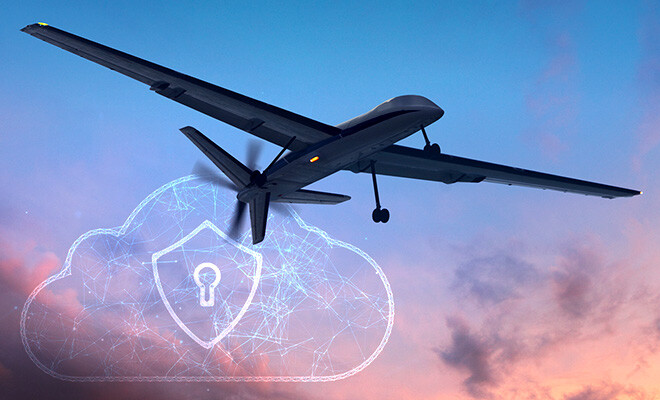With defense spending in the United States (US) projected to reach $886 billion by 20251, many product manufacturers are looking to capitalize on this market growth potential and diversify their business. Although entering defense-related markets can help companies expand their customer base and meet revenue objectives, there are specific regulatory requirements that add greater complexity to the overall product development process.
Most manufacturers in the aerospace and defense industry develop products that are subject to International Traffic in Arms Regulations (ITAR) and Export Administration Regulations (EAR). These regulations govern the export of products, technology, and related technical data to a foreign country or foreign national. The goal is to protect US national security and foreign policy interests.
Over the years, the US government has ramped up its enforcement of ITAR and EAR by
To mitigate compliance risks and avoid costly legal penalties, companies must ensure the secure access and handling of product information throughout the entire lifecycle. Here, we take a closer look at ITAR and EAR compliance and what it means for product companies looking to advance innovation in the aerospace and defense market.
ITAR and EAR Compliance
The items regulated under ITAR are defined in the United States Munitions List (USML)3. Product categories include:
- Firearms and ammunition
- Military vehicles
- Aircraft and associated equipment
- Spacecraft systems
Associated technical data, software, and defense services are defined for each product category. Services encompass design, development, testing, repair, and maintenance.
While ITAR regulates defense-related articles, EAR regulates the manufacture, sale, distribution, and export of dual-use items, commercial goods, technology, and data. Dual-use items that have both commercial and military applications, as well as items intended only for commercial use, are outlined in EAR’s Commerce Control List (CCL)4. Product categories include:
- Electronics
- Computers
- Telecommunications
- Sensors and lasers
- Navigation and avionics
- Marine
- Aerospace and propulsion
Companies must register for export licenses through the US Department of State Directorate of Defense Trade Controls (DDTC)5 and the US Department of Commerce’s Bureau of Industry and Security (BIS)6 to be ITAR and EAR compliant. As part of the registration, manufacturers define the type of product information that is under export control. This could include component descriptions, engineering drawings, specifications, test procedures, and bills of materials (BOMs). Regulated data must be controlled and not exported outside the US or accessible to any non-US citizen at any point during design, production, or sustaining activities unless covered under the export license.
To drive compliant practices, robust systems must be in place to ensure:
- ITAR- and EAR-regulated data is classified and easily distinguished from non-regulated data
- ITAR- and EAR-regulated data remains within a specified geographic US location
- Adherence to standards and best practices for monitoring cybersecurity risks and assessing effectiveness of security controls
- Encryption for in-transit and at-rest data
- Full visibility of who accesses technical data and when they access it
- Access management capabilities that restrict certain individuals from ITAR/EAR product data
Secure ITAR/EAR Product Development With Cloud PLM
Meeting stringent ITAR/EAR requirements can be challenging for manufacturers that rely on product teams and partners from across the globe to keep their product development processes and operations running smoothly. Foundationally, companies need a secure product lifecycle management (PLM) platform that brings together dispersed teams, product information, and quality processes in a single source of truth to meet regulatory requirements and drive faster innovation.
Manual processes and homegrown systems (e.g., file folders, spreadsheets, on-premises servers) that try to address this need create data silos and communication barriers, making it difficult for key stakeholders to efficiently review and optimize product designs. Teams lack full visibility and are unable to address product nonconformances, part shortages, and other bottlenecks that hinder development timelines and delay product launches. More importantly, organizations cannot ensure data integrity, isolation (i.e., restriction to the US), and access control to achieve ITAR/EAR compliance.
In the past, some manufacturers have expressed uncertainty as to whether cloud solutions could fill these gaps and truly meet regulatory requirements. Now, leading companies find that a secure Cloud PLM solution does fully support ITAR and EAR compliance and provides a wide array of other tangible benefits for their businesses.
Today’s purpose-built PLM solutions with proven cloud-native architecture help global companies enhance cross-functional team collaboration, simplify regulatory compliance, and accelerate new product development and introduction (NPDI). They can be quickly deployed and maintained without the investment of costly IT infrastructure or resources, and they allow for maximum scalability as business needs evolve.
An enterprise solution like Arena PLM for AWS GovCloud is deployed geographically within the United States and continually audited by accredited third-party assessors. The system restricts physical and administrative access to US citizens only and provides robust security controls and access management capabilities to ensure process, policy, and system compliance.
By unifying all product information (designs, approved supplier lists, requirements, compliance evidence, SOPs, quality processes, BOMs, engineering changes, etc.) into a secure, digitized record, dispersed teams gain complete visibility and traceability to efficiently execute product development activities while avoiding ITAR/EAR compliance risks.
Conclusion
Contact Arena, a PTC Business to learn more.
References
- Defense Outlays and Forecast in the United States from 2000 to 2033.
- US Department of State Concludes $20,000,000 Settlement of Alleged Export Violations by 3D Systems Corporation.
- United States Munitions List
- Commerce Control List
- US Department of State Directorate of Defense Trade Controls
- Bureau of Industry and Security
















Comments